Human beings are an interesting species. We tend to screw things up, and then get busy trying to help creatively repair the damage. Next, we pat ourselves on the back for our efforts, ignoring the fact that had we done things differently, our attempts to save the wildlife we’ve harmed wouldn’t have been necessary. Here’s just one example.
You can find any number of mason bee houses for sale, and photos on social media of constructions designed to provide places for these bees to live. People drill holes in the ends of logs, create holders for hollow bamboo pieces, and pile up old bricks. All of this to mimic the hollow stems of old plant stalks, and holes in logs drilled by woodpeckers. Yes, it’s admirable that people recognize that mason bees need places to nest…but had they just left some dead trees and dried stems in their yard in the first place, the natural habitat for these insects would have already been there. Instead, we “clean up,” and doing so remove the natural places that support the native bees…not to mention a host of other insects.
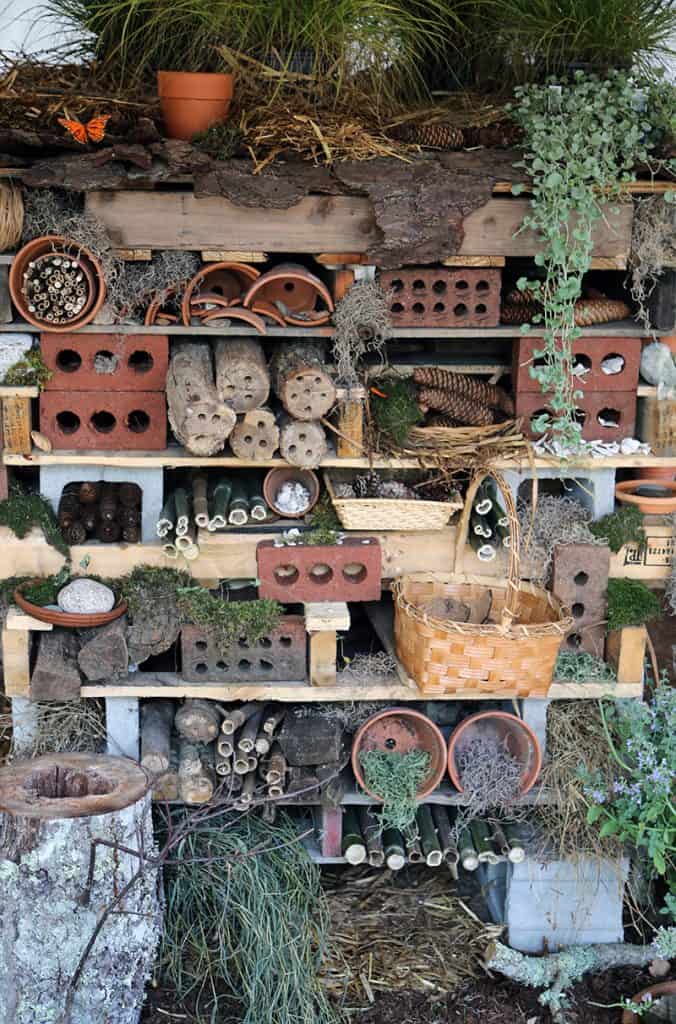
This type of construction gets great circulation on social media. Make places for Mason bees! Provide nesting materials for birds! Yet as long as there have been bees and birds, Nature has provided them with the ideal places for them to live. The holes in the bricks and bamboo are meant to replace the holes in dead trees and hollow stems that have sheltered insects in the past.
Now before you jump all over me for advocating leaving trees that could be dangerous, I assure you that common sense must be used. If a tree is in danger of falling on houses or in a place where people are in jeopardy, they need to be removed. I was the first to ask that a tree that was in danger of falling with a hard gust of wind be taken out because it was leaning over the very place my grandson played. But many dead trees are not in places where they are likely to do harm. We remove them because we think that they don’t look good, and that’s what needs to change. We need to view them as beautiful for the function they provide…more beautiful than any person-constructed habitat.
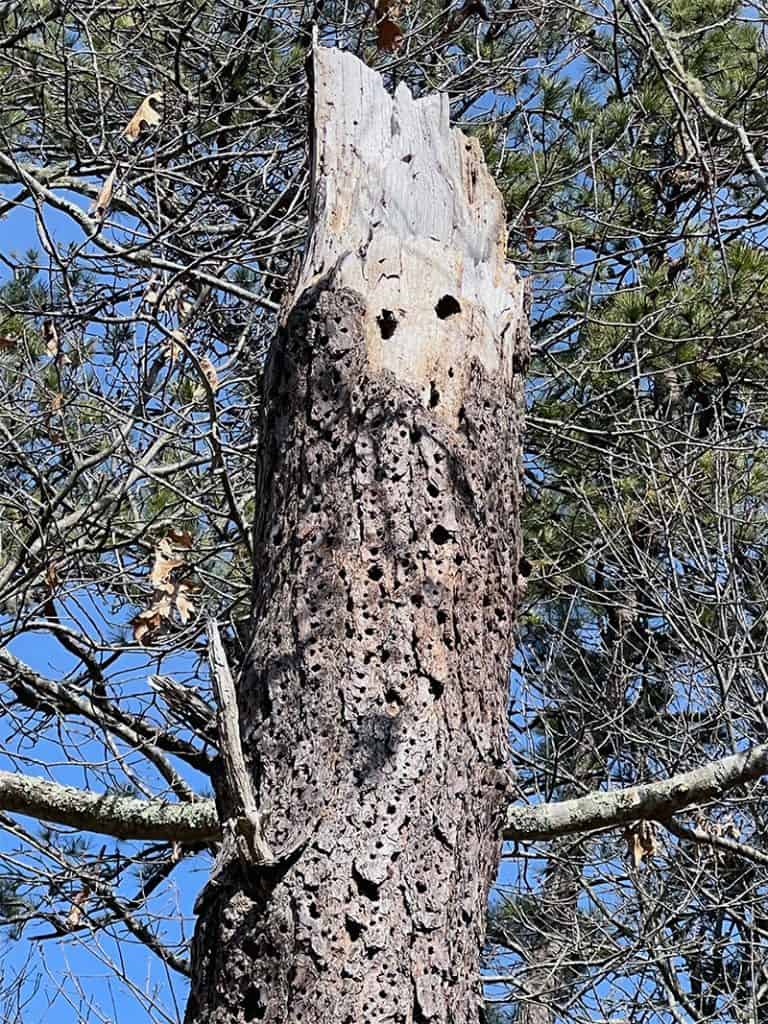
When the top of this pitch pine snapped off in a nor’easter, I insisted that we leave the bottom of the trunk. As you can see, the woodpeckers have been very appreciative.
I’m guilty of this myself, and I use the tale of a red maple, our native Acer rubrum, to illustrate. When we moved into our house at Poison Ivy Acres, we appreciated that that the people who built the house had left a large native maple not far from the back deck. It had three sizable trunks and every year is filled with red flowers and seed pods (samaras) in the spring. But one winter about five years ago, when my husband and I were out shoveling snow, we heard a loud “bang!” Rushing to the back of the house, we saw that the top of one of those maple trunks had broken off. The heavy, wet snow had been enough to snap the top off, leaving a couple of thin, branches behind.

This is the Acer rubrum that is near my deck. You see how the trunk of the left snapped right off. It was so much more attractive when it had a canopy, and since it wasn’t recovering from that large wound, I decided that we should just take it down.
Although we knew that such a large wound on the top of that trunk wasn’t good, we decided to leave the trunk, and see if that thin branch might take off, or a new leader grow. It did not. Although the trunk seemed to be alive, it was not very healthy. Early this spring I mentioned that we should just remove it, even though I greatly preferred to see three trunks there, not just two. Fortunately, my husband didn’t get the chain saw out right away, because last week, as we sat on the deck looking at this red samaras and the bird life in the tree, we noticed that a flicker kept coming to the top of that damaged third trunk. “Do you think that they’re nesting there?” my husband asked.
Sure enough, later in the day when the light was right, I went around to the other side of this tree and studied the top of the broken trunk. There was a good-sized hold that had been excavated there, and as I watched, a flicker poked his or her beak out and gave me the hairy eyeball.
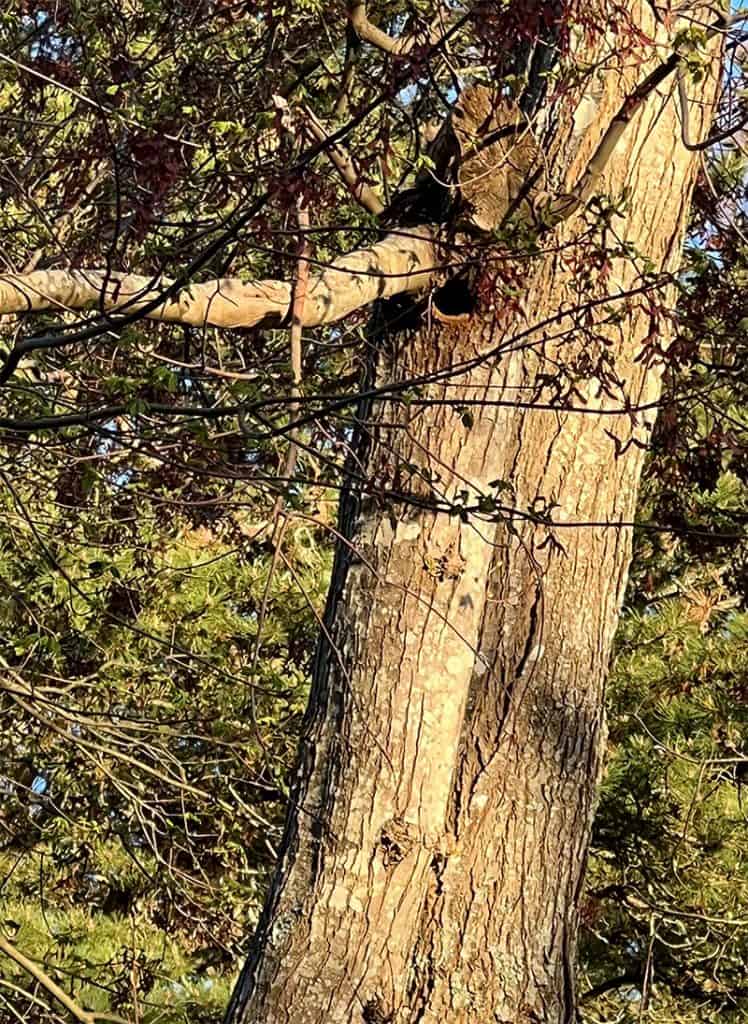
When the setting sun illuminated this part of the trunk, I was able to see the large hole that had been excavated just below the thin branch on top.
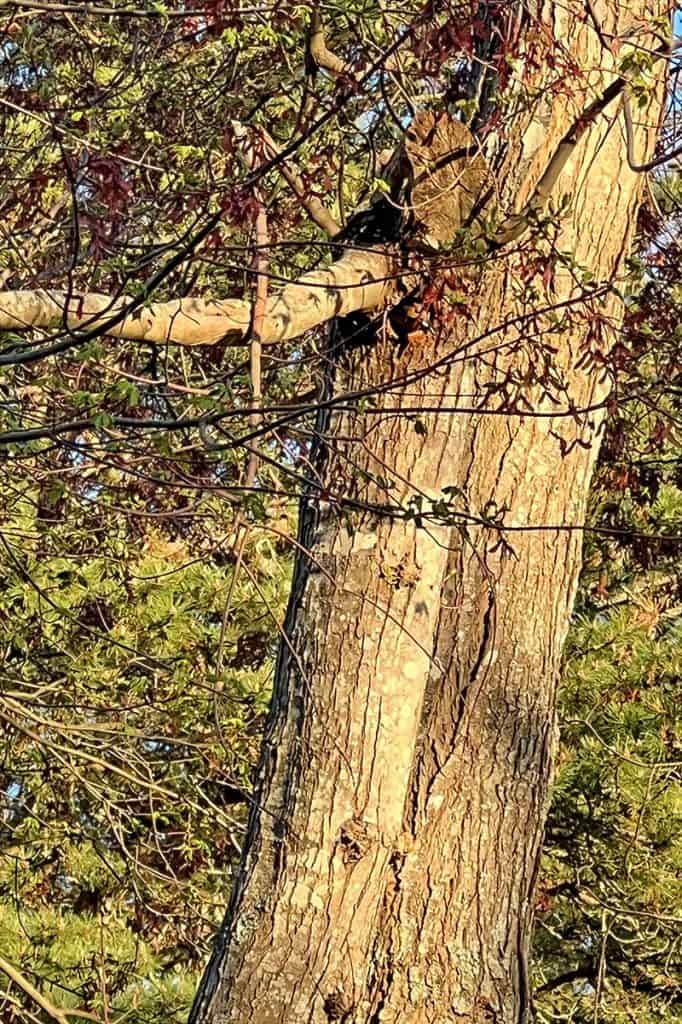
And as I looked at that hole, the flicker poked out, as if to ask “Are you lookin’ at me?” Yes, that third trunk is staying. I am no longer seeing it as a broken tree, but as a giant birdhouse.
Not every dead tree can be left in place, but we can learn to view them from a different perspective – they are not eyesores, but are an A-list neighborhood for wildlife. Maybe in the future #beautifuldeadtree will become a popular hashtag.
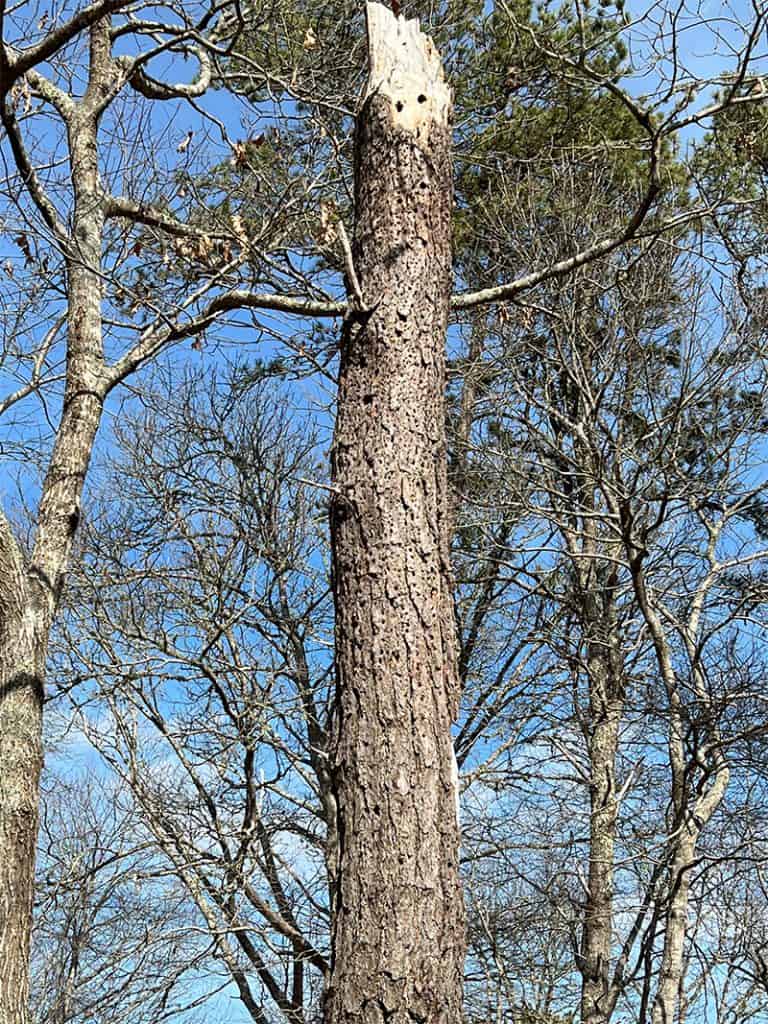
#beautifuldeadtree

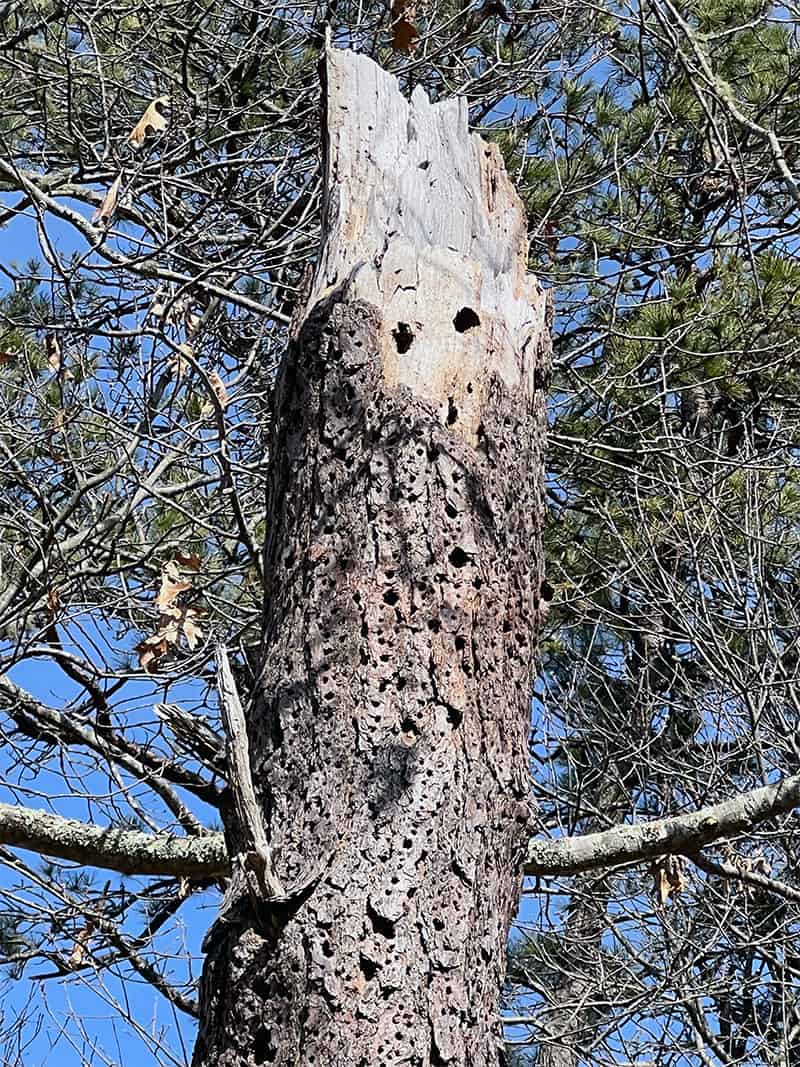
0 Comments